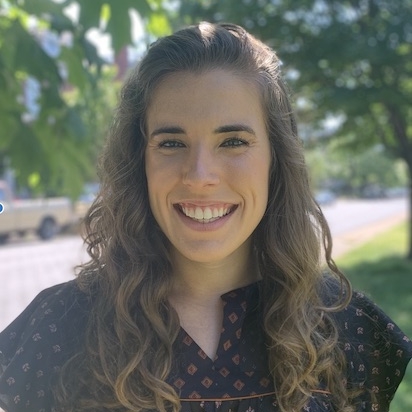By: Ashlee Sjogren
Highlights:
- Engaging students in out-of-school spaces is critical to supporting the whole student. Peers, families, program content, and a fun environment all serve as sources of engagement that programs can optimize on.
- However, both interpersonal tensions and repetition of content can be reasons that middle school students decide not to engage in afterschool programs.
- In this blog, we provide recommendations for afterschool stakeholders as they consider how to encourage youth engagement.

The role of afterschool and summer learning spaces is perhaps even more critical in our mid-/post-pandemic world than ever before. With the rise of online learning, social isolation, and student mental health issues,[i] afterschool spaces serve as a needed additional support to students’ achievement and development.[ii] However, as we re-embark on in-person learning environments, one question stands out: How do we re-engage students, particularly middle school students from historically marginalized communities[iii], in productive afterschool programs?
Sources
In a recent report of middle school students’ engagement in afterschool programs, students identified three key sources and two key barriers to engagement[iv]:
- Program Content – Variety in program content is initially appealing for students who are interested in trying new activities that are not traditionally offered in schools. While some students feel that their afterschool program “is fun because you have activities you would be interested in that you can do, like gym kind of things;” others focus on how afterschool programs expose them to new activities, skills, and classes that they wouldn’t ordinarily get to explore. In this way, afterschool programs can provide space for students to explore new interests, gain new skills, and continue to invest in their personal identity development.
- Friends & Family — Personal relationships with peers and family also serve as an additional source of engagement for many students. While many elementary-aged students engage in afterschool spaces because their parents sign them up, middle school students tend to “vote with their feet.” In this way, some may choose to engage based off of parental encouragement whereas others are highly influenced by their peers’ engagement decisions.
- Fun Environment – Finally, afterschool spaces are different from school. There are fewer rules, more opportunities for student choice, and ultimately often more fun than a traditional school-day environment. This is critical for many adolescents who are seeking autonomy in their decision-making and opportunities to spend time with peers. If we are seeking to promote afterschool engagement for our middle school students, we must be meeting them with fun environments comprised of various activity options, freedom to select their activities, and opportunities to learn new skills and meet new people.
Barriers
Even in the presence of a well-designed and thoughtful afterschool program, there is still the risk of creating unintentional barriers to adolescent engagement. For example, the following two barriers rose to the surface:
- Repetition of Content—Although program content is initially appealing to many middle school students, it can run the risk of developing into a barrier if not adequately differentiated. Students voice that afterschool programs are boring when “we just keep doing the same thing.” Thus, we must not only diversify our course offerings in afterschool spaces but also think critically about keeping the day-to-day content and activities fresh for students.
- Interpersonal Tensions – Lastly, given the prominence and importance of peers during early adolescence, it is important that educators are keenly aware of peer relationships. Although the afterschool space provides a unique opportunity for continued engagement amongst peers, it is not immune to the school-day tensions such as name-calling, nagging, and other forms of bullying. These interpersonal tensions can unintentionally push students out of the afterschool space.
Further, it is important to note students’ experiences with these sources and barriers of engagement varied based on their reported level of engagement.
For example, students who reported lower levels of engagement more often reported interpersonal tensions as a barrier, highlighting how they may be the group most at risk for alienation in educational contexts.
Given this, educators should think critically about the impact of barriers on students who may appear to be on the margins of the program such as those with sporadic attendance.
Moving forward, afterschool educators, parents, and teens can adopt the following suggestions to promote youth engagement across formal and informal learning contexts.
- Ramp up family outreach/engagement efforts to ensure families are adequately informed of program offerings.
- Provide tangible spaces for student feedback to be voiced, considered, and implemented in day-to-day programming decisions.
- Develop leadership opportunities for students such as 1) serving as peer recruiters; 2) serving on a student leadership council; 3) mentoring younger students; and 4) serving as a Teaching Assistant in a course they have mastered.
- Adopt a culturally sustaining discipline approach that seeks to solve the root of interpersonal tensions (i.e., CRPBIS, Restorative Practices).
- Adopt leveled approaches to programming which allow youth to continually refine their skills over time.
- Provide various class opportunities (through community partnerships) and hold program providers accountable to fresh and engaging lesson plans.
Strategies of this sort address adolescents’ need for autonomy and belonging, and further foster their identity exploration. In doing so, they foster spaces that middle school students genuinely desire to engage and promote continued participation.
References
[i] CDC, 2020
[ii] Durlak et al., 2020
[iii] Afterschool Alliance, 2020
[iv] Sjogren et al., 2021
If you have any comments or questions about this post, please email Youth-Nex@virginia.edu. Please visit the Youth-Nex Homepage for up to date information about the work happening at the center.

Author Bio: Ashlee Sjogren, Ph.D. is a post-doctoral research associate at Youth-Nex: Center to Promote Effective Youth Development, University of Virginia. Her research is broadly focused on equitable education both in- and out-of-school. Most recently, Dr. Sjogren has investigated student access and engagement in out-of-school contexts. As an educational psychologist, Dr. Sjogren often brings both a social context and motivation lens to understanding questions of equity, access, and motivation.